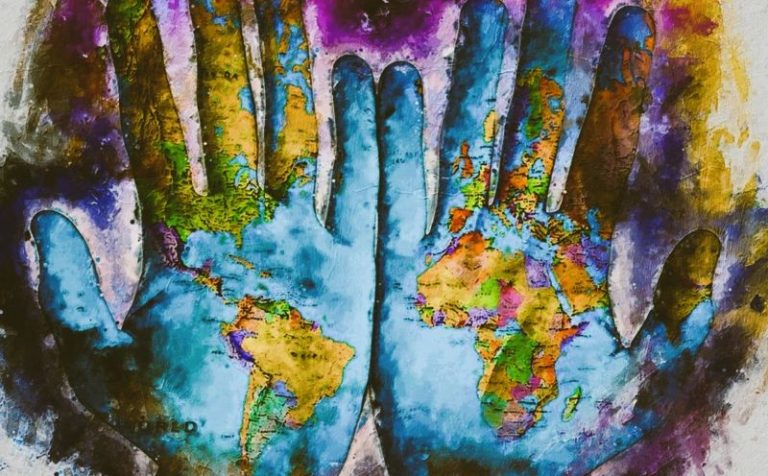

Right-wing extremism online is not a shadow phenomenon. It is part of the digital landscape, adapting to platform shifts, rebranding when disrupted, and continuing to attract new adherents.

By Matthew A. McIntosh
Public Historian
Brewminate
Introduction
The story of right-wing extremism is no longer written only in pamphlets or shouted at rallies. It is coded into memes, threaded through encrypted chats, and disguised as edgy humor on mainstream feeds. Online communities have become the new meeting halls, offering both anonymity and belonging, a paradox that makes them uniquely powerful in drawing vulnerable individuals deeper into extremism.
What these spaces provide is not simply information but a sense of intimacy. They manufacture the illusion of camaraderie even as they circulate manifestos, glorify violence, and flatten complex realities into simplified narratives of us versus them. The question, then, is not whether the internet has changed extremism. It is how far the shift has gone, and whether society has been willing to fully confront its consequences.
The Persistent Online Presence
Research published by the International Centre for Counter-Terrorism shows that right-wing extremists have maintained a persistent and adaptive presence online. Attempts to remove them from mainstream platforms often push them toward more obscure corners of the internet, but these migrations rarely reduce their influence. In fact, exile sometimes sharpens identity. Communities become tighter, rhetoric more unfiltered, and the sense of grievance against “censorship” more compelling.
It is in these spaces that the social function of extremism becomes clearest. Individuals find validation, not just content. They see peers reinforce their views and encourage escalation. Studies tracking extremist ecosystems across Europe and North America show that users who remain in these communities for extended periods become more radical over time, not less. The persistence of the online presence ensures that those seeking belonging will always find a door open.
Terrorgram and the Global Web of Hate
One example of how these communities evolve is the rise and collapse of Terrorgram, a sprawling network of channels on Telegram. Reporting by ProPublica uncovered how the network operated as a global hub for violent white supremacists, sharing propaganda, attack manuals, and aestheticized images of past terrorists. It was not simply a collection of random extremists. It was a brand, one that celebrated martyrdom and weaponized design.
Terrorgram illustrates the transnational character of online radicalization. Extremists in the United States could swap memes and manifestos with counterparts in Europe, drawing on a shared visual language that transcended borders. While authorities eventually disrupted many of these channels, the ideas had already spread, splintering into smaller groups that continue to circulate the same material. The story of Terrorgram is not only about its downfall but about the spores it released into the digital ecosystem.
Alternative Platforms and the Flight from Moderation
As mainstream platforms increase their content moderation, right-wing extremists have migrated to alternative spaces. Forbes documented this migration in the wake of January 6, when platforms like Parler, Gab, and Telegram became refuges for users banned from Twitter and Facebook. These platforms promised freedom from censorship, but they also became echo chambers where radical ideas could circulate unchecked.
The irony is that not all platform founders welcomed this development. Some recognized that a surge of extremist users brought scrutiny, reputational damage, and the risk of deplatforming by app stores or hosting services. Yet once extremist communities establish themselves, they rarely leave quietly. They replicate, fracture, and resurface, carrying with them the conviction that they are persecuted truth-tellers rather than participants in a dangerous feedback loop.
The Mechanics of Radicalization
Radicalization online is not a single event but a gradual conditioning. A recent study in ScienceDirect emphasizes how algorithms, repetition, and peer validation contribute to what researchers call “cognitive hardening.” Exposure to extremist narratives normalizes them, particularly when framed with humor or irony. A racist meme that begins as “just a joke” can, through repetition and reinforcement, become the lens through which an individual interprets the world.
These mechanisms matter because they do not rely on explicit recruitment. There is rarely a figure in a darkened room persuading someone to join a cause. Instead, individuals persuade themselves, guided by the logic of communities that celebrate defiance and portray violence as heroic. The process can be invisible to outsiders until it culminates in acts of aggression, leaving families and communities stunned at how a seemingly ordinary person could cross such a line.
A Sense of Belonging, A Culture of Violence
What makes these communities magnetic is their ability to fuse belonging with ideology. They do not simply offer political arguments. They offer identity. To be part of a channel, a forum, or a group is to be recognized, affirmed, and told that one’s grievances are legitimate. The cultural style of these communities (memes, slogans, and shared stories) transforms ideology into lifestyle.
This is where the danger deepens. When violence is presented not as an aberration but as a natural extension of loyalty, the community becomes both shield and sword. Members are not just reading extremist content; they are participating in a culture that celebrates transgression. In such spaces, to hesitate is to risk being labeled weak, while to act is to be elevated.
Conclusion
Right-wing extremism online is not a shadow phenomenon. It is part of the digital landscape, adapting to platform shifts, rebranding when disrupted, and continuing to attract new adherents. From Terrorgram’s aesthetics of violence to the quieter reinforcement of memes in obscure forums, the story is not one of disappearance but of persistence. Confronting this reality requires more than content moderation. It demands recognition that online extremism functions as both ideology and community, feeding on alienation while offering purpose. Until that dynamic is addressed, the internet will remain not just a stage for extremist rhetoric but a crucible where radicalization is forged, refined, and made ready for the world beyond the screen.
Originally published by Brewminate, 09.15.2025, under the terms of a Creative Commons Attribution-NonCommercial-NoDerivatives 4.0 International license.


